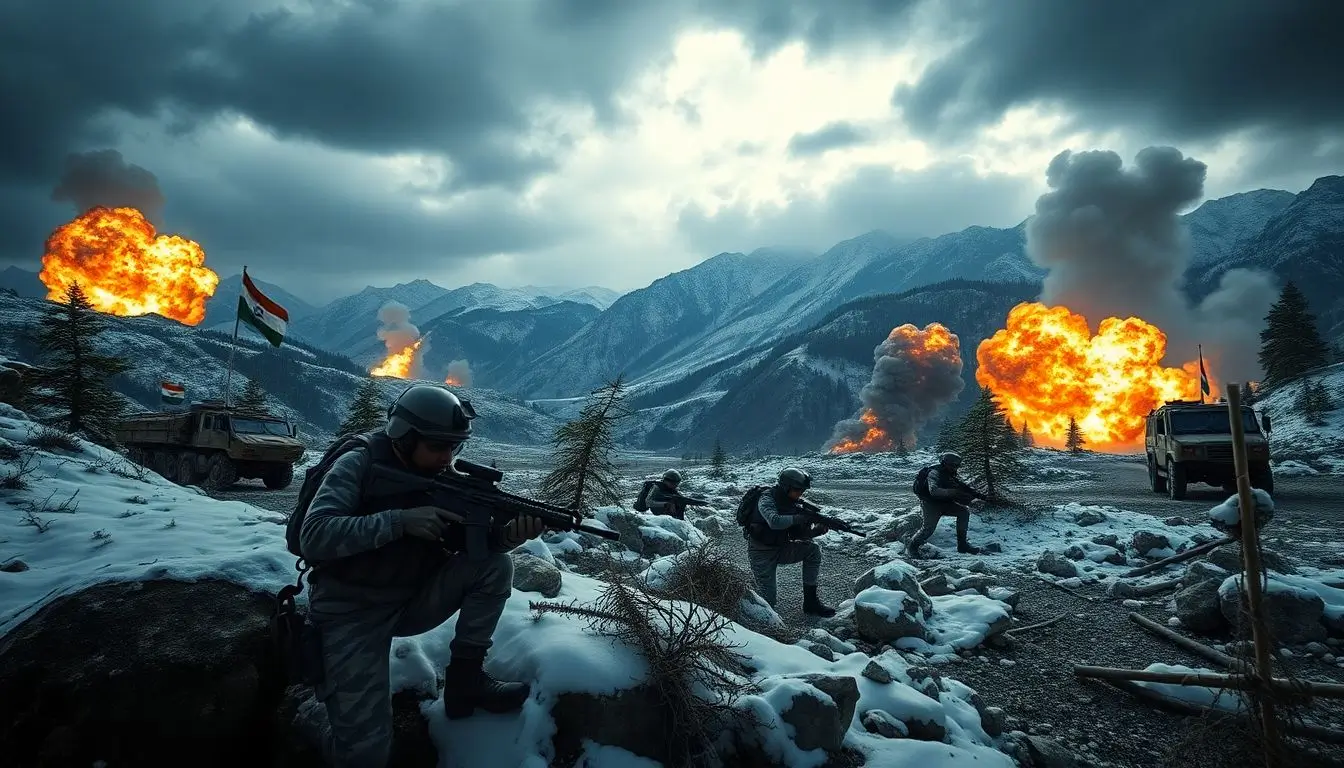Introduction
The recent attack in Pahalgam shocked India and raised concerns about rising terror threats. It was a clear sign that extremism still threatens peace in the region. This incident pushed India to respond swiftly and strongly. India’s approach combines military force, diplomacy, and new policies to fight terror effectively. Understanding these actions reveals how India plans to protect its borders and its people.
India’s Military and Security Responses
Heightened Troop Deployment in Kashmir
After the attack, India increased troop numbers along the Line of Control (LoC). More soldiers now patrol sensitive areas to prevent future attacks. This move has made life tougher for locals, but it shows how seriously India takes security. The goal is to create a stronger barrier against terror groups trying to infiltrate.
Strategic Counter-Terror Operations
India launched targeted military strikes after the terror attack. Special forces raided terrorist camps, destroying supplies and killing militants. These operations are precise, aiming to weaken terror networks. Reports confirm the successful neutralization of several high-ranking terrorists linked to the attack.
Strengthening Intelligence Capabilities
India stepped up intelligence work by sharing more information within agencies and with allies. Agencies like RAW and IB now monitor more closely for signs of trouble. Advanced surveillance tech helps spot threats early and prevent them from unfolding.
Diplomatic and International Actions
Diplomatic Outreach to Ally Nations
India communicates regularly with key countries like the US, UK, and Gulf nations. These discussions focus on condemning terrorism and blocking terror funding. India’s goal is to get broad international support and pressure Pakistan to stop harboring terrorists.
UNSC and Global Forums Response
India pushed the UN Security Council to speak out against cross-border terror. The country sought resolutions condemning Pakistan’s support for terror groups. Several nations have issued statements backing India’s stance, adding pressure on Pakistan to change its ways.
Efforts to Isolate Pakistan Diplomatically
India works with global allies to highlight Pakistan’s role in supporting terror. Countries are urged to restrict diplomatic visits and reduce aid to Pakistan if terror persists. This diplomatic isolation aims to pressure Pakistan to end its terror sponsorship.
Economic and Cyber Measures
Sanctions and Financial Restrictions
India has imposed sanctions on terrorist groups and their leaders. These include freezing bank accounts and cutting off resources used for terror acts. Efforts target disrupting funding channels from Pakistan, making it harder for terrorists to operate.
Cybersecurity Operations
India also fights cyber warfare linked to terror groups. Recent operations block disinformation campaigns and cyber-attacks aimed at destabilizing India. Improving cyber defenses helps protect critical infrastructure and public trust.
Social and Political Mobilization
National Security Campaigns
India uses media to inform the public about security threats. Campaigns promote patriotism and encourage citizens to report suspicious activity. Public support makes it harder for terrorists to hide within communities.
Legislative and Policy Initiatives
The government is working on new laws to improve anti-terror measures. These laws make it easier to arrest and prosecute terrorists. Updates to existing laws strengthen India’s ability to handle terror cases quickly and effectively.
Strategic Deterrence and Future Preparedness
Military Modernization and Readiness
India is upgrading its military with new tech, weapons, and infrastructure along the border. Training programs are more frequent, ensuring troops are ready to respond fast. These steps act as a deterrent against future attacks.
Diplomatic Deterrence Strategies
India continues dialogues with global powers to build long-term strategies. These focus on peace, stability, and denying terrorists safe havens. Working with allies creates a united front and better security coordination.
Recommendations for Ongoing Vigilance
Sharing intelligence constantly is key to preventing attacks. Communities must also stay alert to radical ideas spreading locally. Together, these measures make India safer and more prepared for future threats.
Conclusion
India responded to the Pahalgam terror attack with seven major actions. These include military strikes, diplomatic pressure, economic restrictions, and community efforts. Combining these strategies strengthens India’s stance against terror. Continued vigilance and cooperation are essential for peace and security. The road ahead calls for unity and perseverance to keep the region safe and stable.

